
Plasma
Scope & Guideline
Connecting Researchers to Transform Plasma Knowledge
Introduction
Aims and Scopes
- Fundamental Plasma Physics:
Research exploring the basic principles of plasma behavior, including the study of ion and electron dynamics, wave phenomena, and plasma interactions under various conditions. - Plasma Diagnostics:
Development and application of diagnostic techniques to measure plasma properties such as temperature, density, and composition, which are crucial for understanding plasma behavior in both laboratory and astrophysical contexts. - Plasma Applications in Medicine:
Investigation of plasma technologies for medical applications, including plasma-assisted therapies, disinfection methods, and the effects of plasma on biological systems. - Environmental Applications of Plasma:
Research focused on utilizing plasma technology for environmental remediation, such as the degradation of pollutants and treatment of hazardous materials. - Fusion and Energy Research:
Studies related to plasma confinement and behavior in the context of nuclear fusion, including experiments and theoretical models aimed at improving energy generation processes. - Nanotechnology and Material Science:
Applications of plasma technology in the synthesis and treatment of nanomaterials, including coatings, thin films, and modifications to material properties. - Plasma Simulation and Modeling:
The use of computational techniques to simulate plasma behaviors and interactions, enhancing understanding and predictive capabilities in plasma physics.
Trending and Emerging
- Cold Atmospheric Plasma Applications:
Recent research emphasizes the use of cold atmospheric plasmas in medical therapies and surface treatments, highlighting their potential for non-invasive applications and environmental benefits. - Plasma for Environmental Remediation:
There is an increasing focus on utilizing plasma technology for environmental cleanup, particularly in the degradation of persistent pollutants and waste treatment. - Integration of Machine Learning with Plasma Research:
Emerging studies are integrating machine learning techniques for predictive modeling and analysis in plasma physics, enhancing data interpretation and experimental design. - Biomedical Applications of Plasma Technology:
An upsurge in research surrounding the biomedical applications of plasma, including the effects of plasma on cancer cells and microbial disinfection, indicates a growing interest in this interdisciplinary field. - Advanced Plasma Diagnostics:
Innovative diagnostic methods are being developed, enabling more precise measurements and understanding of plasma properties, which is crucial for both fundamental research and practical applications.
Declining or Waning
- Traditional Thermal Plasma Studies:
Research focusing solely on traditional thermal plasma processes has decreased, likely due to the growing interest in non-thermal and cold plasma applications. - Low-Pressure Plasma Techniques:
The emphasis on low-pressure plasma applications has waned as researchers increasingly focus on atmospheric pressure plasmas, which offer more practical applications in various industries. - Basic Theoretical Studies without Application:
There is a noticeable decline in purely theoretical studies that do not demonstrate practical applications, as the journal shifts towards more applied and interdisciplinary research. - Plasma Physics in Space Applications:
While still relevant, the specific focus on plasma physics in space applications has decreased, possibly overshadowed by more immediate terrestrial applications of plasma technology.
Similar Journals
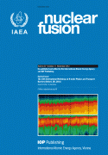
NUCLEAR FUSION
Illuminating the path to sustainable energy solutions.NUCLEAR FUSION is a prestigious academic journal published by IOP Publishing Ltd, dedicated to advancing the field of nuclear and high-energy physics. With a significant impact factor and recognized among the top-tier journals, it boasts a Q1 ranking in both Condensed Matter Physics and Nuclear and High Energy Physics as of 2023. This journal, which has been published continuously since 1969, serves as a vital platform for researchers, professionals, and students exploring the latest advancements in fusion energy, plasma physics, and the intricate phenomena associated with high-energy states of matter. By disseminating original research, comprehensive reviews, and interdisciplinary studies, NUCLEAR FUSION strives to foster innovation and collaboration in pursuit of sustainable energy solutions, contributing significantly to the scientific community’s understanding of nuclear fusion processes. While the publication offers access options that enhance its reach, its rigorous peer-review process ensures the highest quality of scholarly communication.
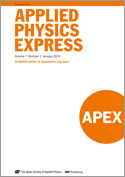
Applied Physics Express
Nurturing Excellence in Applied Physics StudiesApplied Physics Express, published by IOP Publishing Ltd, is a leading journal that focuses on the rapid dissemination of research in applied physics, aimed at both academia and industry professionals. Operating from Japan, this prestigious journal features a broad scope within the domains of engineering and physics and astronomy, earning a significant place in the research community, as evidenced by its Q2 ranking in both disciplines for 2023. With a commitment to excellence, Applied Physics Express provides a platform for authors to share their innovative findings, promoting collaboration and advancement in the field. Its impact is further highlighted by its solid performance in Scopus rankings, featuring prominently within the engineering and physics categories. Although the journal does not currently operate under an open access model, it is dedicated to ensuring that high-quality research is accessible to its readers. Researchers, students, and professionals can find invaluable insights and cutting-edge studies within its pages, making it an essential resource for those engaged in applied physics and its interdisciplinary applications.
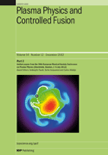
PLASMA PHYSICS AND CONTROLLED FUSION
Leading the Charge in Plasma Science and Nuclear EngineeringPLASMA PHYSICS AND CONTROLLED FUSION is a leading academic journal published by IOP Publishing Ltd that focuses on advancing the understanding of plasma physics and its applications in the field of controlled fusion. Established in 1984, this prestigious journal has earned a significant reputation, demonstrated by its Q1 rankings in both Condensed Matter Physics and Nuclear Energy and Engineering for 2023, alongside impressive Scopus rankings placing it in the 79th percentile in its category. The journal serves as an essential platform for researchers, professionals, and students seeking to stay abreast of cutting-edge developments in plasma behavior, fusion technologies, and theoretical frameworks. While it does not currently offer open access options, the journal's rigorous peer-review process ensures the dissemination of high-quality research that is crucial for the advancement of nuclear energy solutions and the broader field of physics. With its commitment to fostering innovative research and development, PLASMA PHYSICS AND CONTROLLED FUSION is a vital resource for those passionate about the future of energy and scientific exploration.

JOURNAL OF FUSION ENERGY
Fostering collaboration for a sustainable energy future.The Journal of Fusion Energy, published by Springer, stands as a significant platform for advancing the field of nuclear energy and high-energy physics. With an ISSN of 0164-0313 and an E-ISSN of 1572-9591, this journal has been pivotal for researchers since its inception, tracking the latest innovations and research breakthroughs from 1981 to 1983 and continuing its legacy from 1985 to 2024. Recognized as a Q2 journal in both the Nuclear and High Energy Physics and Nuclear Energy and Engineering categories for 2023, it boasts a respectable Scopus ranking that places it among the top journals in its field—ranking #37 out of 77 in Nuclear Energy and Engineering and #50 out of 87 in Physics and Astronomy. Although it does not offer open access options, the journal remains a crucial resource for professionals, researchers, and students striving to stay informed on the pivotal developments in fusion energy research. Its comprehensive articles are designed to engage the academic community, paving the way for new paradigms in energy production and sustainability.

Applied Science and Convergence Technology
Fostering Collaboration Across Scientific FrontiersApplied Science and Convergence Technology (ISSN: 2288-6559) is a premier academic journal published by the Korean Vacuum Society, dedicated to advancing knowledge in the intersecting fields of condensed matter physics, electrical and electronic engineering, materials science, and theoretical chemistry. Based in South Korea, this journal serves as an essential platform for researchers, professionals, and students seeking to explore innovative applications and methodologies that drive convergence in science and technology. With a convergence period spanning from 2019 to 2024, the journal aims to publish high-quality original research and review articles that foster collaboration and knowledge sharing across disciplines. Its current quartiles position in top categories, alongside a respectable rank in Scopus, highlights its significance within the scientific community, although it is presently classified within lower tiers. The journal's commitment to open access ensures that vital research findings are accessible to a global audience, facilitating advancements in science and technology. As a notable outlet in its field, Applied Science and Convergence Technology continues to attract contributions that not only challenge current paradigms but also pave the way for future innovations.
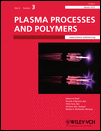
Plasma Processes and Polymers
Leading the Charge in Plasma and Polymer AdvancementsPlasma Processes and Polymers is a leading peer-reviewed journal published by WILEY-V C H VERLAG GMBH, focusing on the innovative field of plasma science and polymer technology since its inception in 2004. With an ISSN of 1612-8850 and an E-ISSN of 1612-8869, this journal has established its reputation within the scientific community, holding a commendable Q2 ranking in both Condensed Matter Physics and Polymers and Plastics for 2023. Recognized for its rigorous standards and impactful contributions to the field, it ranks in the top 20% of the Physics and Astronomy category and top 26% of the Materials Science category, as per Scopus metrics. Catering to researchers, professionals, and students alike, the journal publishes cutting-edge articles that advance understanding and application of plasma processes in polymer science, thereby bridging theoretical insights with practical implications. While currently not offering open access, it provides a critical platform for advancing knowledge and fostering innovation, making it essential reading for those at the forefront of polymer research and applications.

Jordan Journal of Physics
Navigating the Frontiers of Physics and AstronomyJordan Journal of Physics is a pivotal scholarly platform published by YARMOUK UNIVERSITY, DEANSHIP RESEARCH & GRADUATE STUDIES, dedicated to the field of physics and its applications. Established in 2008, this journal serves as a crucial avenue for disseminating quality research and insights in various subfields of physics and astronomy. As a publication in the Q4 category per the 2023 metrics, the journal, while currently placed in the lower quartile, offers a unique opportunity for emerging researchers to contribute their findings. With an ISSN of 1994-7607 and a commitment to fostering academic discourse, the Jordan Journal of Physics provides access to original research articles, reviews, and case studies aimed at enriching knowledge and innovation. While it does not presently offer open access, efforts are underway to expand its reach and visibility in the global academic context. Researchers and scholars will find this forum to be an essential resource for advancing their work and connecting with a community dedicated to exploration and understanding of the fundamental principles that govern our universe.

DOKLADY PHYSICS
Fostering Knowledge in the Realm of Physical Sciences.DOKLADY PHYSICS is a prominent academic journal dedicated to advancing knowledge in the fields of computational mechanics, mechanics of materials, and general physics and astronomy. Published by MAIK NAUKA/INTERPERIODICA/SPRINGER, this journal has established itself as a crucial resource for researchers and professionals keen on exploring the intricacies of physical phenomena and engineering applications. With its ISSN 1028-3358 and E-ISSN 1562-6903, DOKLADY PHYSICS has been contributing to scientific discourse since its inception in 1996 and continues to provide a platform for innovative research up to 2023. Despite its current Q3 ranking in several key categories, the journal maintains an inclusive approach, striving to influence both academic and practical aspects of its fields. While the journal may not be open access, it remains a vital publication for those interested in high-quality research, as reflected in its Scopus ranking positions across various engineering and physics categories.

BRAZILIAN JOURNAL OF PHYSICS
Bridging Gaps in Scientific UnderstandingBRAZILIAN JOURNAL OF PHYSICS, published by SPRINGER, is a prominent platform dedicated to the dissemination of research within the realm of physics and astronomy. With an ISSN of 0103-9733 and E-ISSN of 1678-4448, this esteemed journal has been contributing to the field since its inception in 1996, and it continues to be pivotal in showcasing innovative studies and breakthroughs. The journal is categorized in the Q4 quartile for the year 2023, reflecting a dedicated focus on advancing knowledge across a variety of disciplines, particularly in general physics and astronomy, where it ranks 126th out of 243 in Scopus rankings. Although it currently does not operate under an open-access model, it remains an invaluable resource for researchers, professionals, and students eager to enhance their understanding of complex physical principles and developments. The journal is committed to promoting high-quality research, bridging gaps in knowledge, and fostering collaboration within the global physics community.
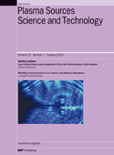
PLASMA SOURCES SCIENCE & TECHNOLOGY
Exploring Innovations in Plasma Physics and Applications.PLASMA SOURCES SCIENCE & TECHNOLOGY is a premier academic journal published by IOP Publishing Ltd, focusing on the innovative field of plasma science and its applications in technology. Established in 1992, the journal has significantly contributed to advancing knowledge in this crucial area, maintaining a robust Q1 quartile ranking in Condensed Matter Physics as of 2023, which reflects its high-impact research dissemination. With an impressive Scopus ranking of 74 out of 434 in the field of Physics and Astronomy—specifically within Condensed Matter Physics—this journal stands out as a leading source for researchers and professionals dedicated to the study and application of plasma technologies. While it is not an Open Access journal, the published works are accessible through institutional subscriptions, making them available to a wide academic audience. The journal aims to provide a platform for significant contributions related to plasma physics, fostering scientific dialogue and collaboration across various disciplines. As it continues through its converged years up to 2024, PLASMA SOURCES SCIENCE & TECHNOLOGY remains essential for anyone involved in the burgeoning exploration of plasma-related scientific advancements.